It was a considerably developed version of the original car, the biggest change being the new 2-litre quad-cam V8 engine. This was positioned behind the cockpit and drove the rear
wheels through an Alfa Romeo built six-speed straight cut gearbox which extended behind the axle line. The structure comprised two side (diameter 200mm, thickness 2.5mm) and one transverse rear cylindrical member, from
aluminium (rivetted then rubberised internally), which also
served as fuel tanks (see picture at bottom of page). At the front there was a magnesium bulkead which supported the front suspension, whilst two chassis legs from the same material extended at the rear of the
structure to support the rear suspension. The suspension itself comprised independent wishbones with coil spring / damper units, whilst braking was provided by four ventilated
discs, the rear ones which were mounted inboard next to the transmission. Curiously the handbrake used a separate single disc at the rear of the transmission.
The car debuted a few days after its presentation, at a hillclimb in Belgium which it won. Slightly less success was obtained at both the Sebring 12 hours and the Targa Florio. At both
events the cars showed themselves to be fast, but failed to finish either and reliability problems continued for the rest of that season.
The 1969 car underwent even more changes. Known as the 33/3 to reflect its new 3-litre V8 engine, it also replaced the tubular chassis with a titanium reinforced boxed sheet steel
Sebring in 1969 proved a disaster for the new cars, and the Targa Florio was competed, unsuccessfully, with 33/2 cars. Alfa Romeo did not race at Le Mans after Bianchi tragically
died in a crash in practice and the rest of the year proved to be similarly unspectacular despite a couple of good results in smaller races. Less modifications were carried out for
1970, with outboard rear brakes and a nose mounted water radiator the main changes. The results, however, improved with a few podium finishes, leaving Alfa Romeo again third in the championship.
The engine power went up to 420bhp for the 1971 season, and coupled to a new five speed gearbox and a significant reduction in weight, rendered the cars considerably more
A new tubular chassis (Telaio Tubolare) was developed for 1972, the resulting 33TT3 actually being tested in some events in 1971. The gearbox was moved ahead of the
differential to improve the balance of the car, whilst the air intakes ahead of the rear wheels gradually moved onto the top surface of the car, which as a result became more
slab sided. With 440bhp @ 9,800rpm and a weight of only 650kg they were very competitive, but the new Ferrari 312P’s proved unbeatable, Alfa Romeo again taking the runners up position in the championship.
More radical changes were needed for 1973 and the result was the 33TT12 with a new 12 cylinder boxer engine. Displacing 3-litres, with four valves per cylinder, gear driven
twin camshafts on each bank, one plug per cylinder and a compression ratio of 11:1 they produced 500bhp @ 11,000rpm. Externally the sides were completely flat, the body was
For 1975 the same car was used, the most noticeable difference being the large amount of sponsorship present. The results were also rather different, Alfa Romeo taking the
Manufacturers Championship after years of trying. They were only beaten in one of the championship races of that year. The following year saw the 33TT12s rarely making an
appearance, as Autodelta concentrated on other areas.
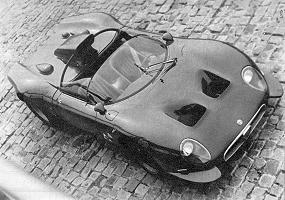 September 1964 saw the experimental department of Alfa Romeo start work on a new sportscar, intended for the Sports Prototypes category. Initially known as the 105.33 the first car,
powered by a TZ2 engine, was ready late in 1965 and was sent to Autodelta who continued the development. The resulting car was officially presented on 6th March 1967 at Balocco, known as the Tipo 33/2.
September 1964 saw the experimental department of Alfa Romeo start work on a new sportscar, intended for the Sports Prototypes category. Initially known as the 105.33 the first car,
powered by a TZ2 engine, was ready late in 1965 and was sent to Autodelta who continued the development. The resulting car was officially presented on 6th March 1967 at Balocco, known as the Tipo 33/2.
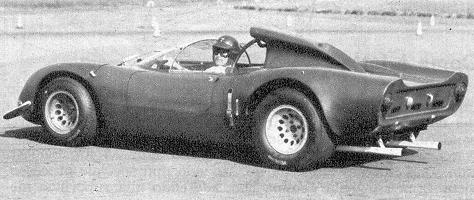 The engine had a 90° angle between the banks, each of which had two chain driven camshafts. Hemispherical combustion chambers had two valves per cylinder, the exhaust ones
using sodium cooling. Fuel injection was into the inlet manifold and by Lucas whilst the ignition system used two distributors and four coils to provide sparks to the two spark plugs per cylinder. A dry sump
lubrication system was fitted. With the compression ratio of 11:1 this engine produced 270bhp @ 9,600rpm.
The engine had a 90° angle between the banks, each of which had two chain driven camshafts. Hemispherical combustion chambers had two valves per cylinder, the exhaust ones
using sodium cooling. Fuel injection was into the inlet manifold and by Lucas whilst the ignition system used two distributors and four coils to provide sparks to the two spark plugs per cylinder. A dry sump
lubrication system was fitted. With the compression ratio of 11:1 this engine produced 270bhp @ 9,600rpm.
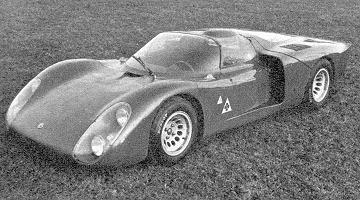 For 1968 the car was significantly modified, both for more performance and reliability. It was easily distinguishable by the twin vertically staggered faired in headlights, the air intakes
for the radiators ahead of the rear wheels and the lack of the very characteristic periscope air inlet of the 1967 car. The engine was also modified with a lower rev limit to aid reliability.
They debuted at Daytona in February 1968 and came 5th, 6th and 7th, afterwards they were known as the Daytona 33. For the Targa Florio of that year the car was given a 2.5-litre
engine with 315bhp as well as having a front-mounted oil radiator. They finished 2nd, 3rd, 5th and 6th. Mugello saw the 33 gain its first win, whilst at Le Mans they managed 4th, 5th
and 6th. At the end of the season Alfa Romeo finished third in the manufacturers championship.
For 1968 the car was significantly modified, both for more performance and reliability. It was easily distinguishable by the twin vertically staggered faired in headlights, the air intakes
for the radiators ahead of the rear wheels and the lack of the very characteristic periscope air inlet of the 1967 car. The engine was also modified with a lower rev limit to aid reliability.
They debuted at Daytona in February 1968 and came 5th, 6th and 7th, afterwards they were known as the Daytona 33. For the Targa Florio of that year the car was given a 2.5-litre
engine with 315bhp as well as having a front-mounted oil radiator. They finished 2nd, 3rd, 5th and 6th. Mugello saw the 33 gain its first win, whilst at Le Mans they managed 4th, 5th
and 6th. At the end of the season Alfa Romeo finished third in the manufacturers championship.
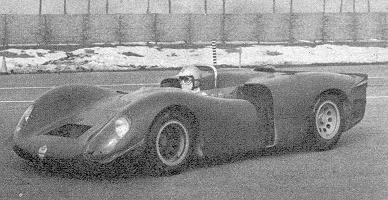 frame. Composite panels were used for the open bodywork, whilst the lights and rear mounted air intakes remained similar to the previous car. The engine was a new unit, derived
from a F1 project and used one spark plug and four valves per cylinder to help it generate 400bhp @ 9,000rpm.
frame. Composite panels were used for the open bodywork, whilst the lights and rear mounted air intakes remained similar to the previous car. The engine was a new unit, derived
from a F1 project and used one spark plug and four valves per cylinder to help it generate 400bhp @ 9,000rpm.
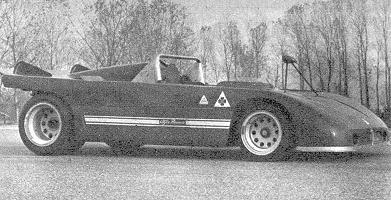 competitive, despite the external appearance remaining essentially the same. Wins were taken at Brands Hatch, the Targa Florio and Watkins Glen as well as numerous other
podium finishes, and Alfa Romeo this time took second place in the championship.
competitive, despite the external appearance remaining essentially the same. Wins were taken at Brands Hatch, the Targa Florio and Watkins Glen as well as numerous other
podium finishes, and Alfa Romeo this time took second place in the championship.
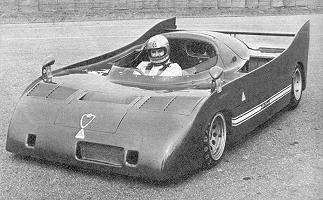 open and a large wing was fitted at the rear. The first season for this car proved more a period of development and in 1974 they did noticeably better, finishing second in the
championship after several podium finishes including a win at Monza.
open and a large wing was fitted at the rear. The first season for this car proved more a period of development and in 1974 they did noticeably better, finishing second in the
championship after several podium finishes including a win at Monza.
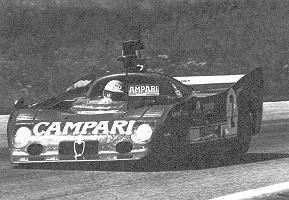 Yet another development, the 33SC12, emerged for the 1977 season, the SC referring the the boxed (SCatolato) chassis. With 520bhp @ 12,000rpm they won all eight of the
championship races and thus the title. Towards the end of the season a twin turbocharged version also appeared, with a 2.1-litre engine which produced 640bhp @ 11,000rpm.
That was the last year of competition for the 33 cars.
Yet another development, the 33SC12, emerged for the 1977 season, the SC referring the the boxed (SCatolato) chassis. With 520bhp @ 12,000rpm they won all eight of the
championship races and thus the title. Towards the end of the season a twin turbocharged version also appeared, with a 2.1-litre engine which produced 640bhp @ 11,000rpm.
That was the last year of competition for the 33 cars.
See our Concept cars page for some 33 based cars. You can also find
pictures of these cars on our Alfa Romeo museum page.
The exhibition at the London Science Museum also featured this model.
Technical Details
| Engine | 33/2 : 1995cc (78x50.4mm) quad cam 90° V8 with 2 valves per cylinder and 270bhp @ 9,600rpm
33/3 33TT3 : 2998cc (86x64.4mm) quad cam 90° V8 with 4 valves per cylinder and 400bhp @ 9,000rpm, later 440bhp@ 9,800rpm 33TT12 : 2995cc (77x53.6mm) quad cam flat 12 with 4 valves per cylinder and 500bhp @ 11,000rpm 33SC12 : 2993cc (77x53.6mm) quad cam flat 12 with 4 valves per cylinder and 520bhp @ 12,000rpm 33SC12 turbo : 2134cc (77x38.2mm) quad cam turbocharged flat 12 with 4 valves per cylinder and 640bhp @ 11,000rpm |
| Suspension | front : double wishbone with coil springs and telescopic dampers
rear : double wishbone with coil springs and telescopic dampers, later 5 link setup wheelbase : 33/2 = 2250mm ; 33/3 = 2240mm ; 33TT12 = 2340mm ; 33SC12 = 2500mm track (front/rear) : 33/2 = 1336mm/1445mm ; 33/3 = 1500mm/1380mm 33TT12 = 1430mm/1470mm ; 33SC12 = 1490mm/1470mm |
| Brakes | front : discs
rear : discs |
| Gearbox | 6 speed manual plus limited slip differential, 5 speed on 12 cylinder cars |
| Kerb weight | 33/2 = 580kg ; 33/3 = 700kg (650kg from 1971) ; 33TT12 = 670kg ; 33SC12 = 720kg (turbo 770kg) |
 |
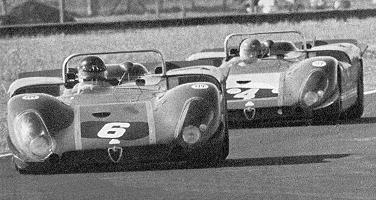 |
Production figures
33/2 coupés : 30
33/2 spiders : 20
33TT12 : 6
33SC12 : 6
33SC12 turbo : 2
![]() For books on Alfa Romeo see our Online Bookstore
For books on Alfa Romeo see our Online Bookstore
There is also a list of all our picture galleries (including museums, motorshows and various events).
Wallpapers/Desktop Backgrounds of numerous Alfa Romeo's also available to download.
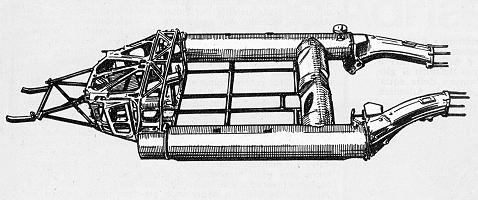
Use the buttons at the top to navigate further, or
Copyright © 2000 to 2008 CarsfromItaly